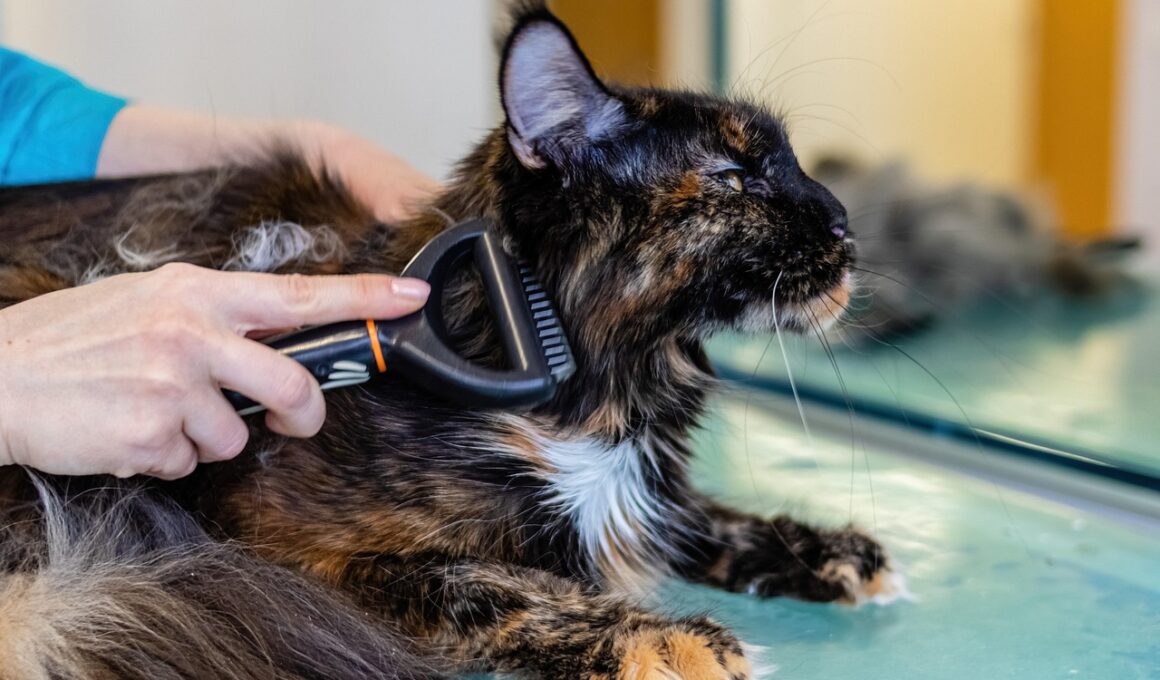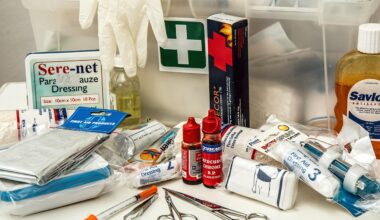Post-Emergency Care and Monitoring for Adopted Cats
After a cat has undergone emergency care, it’s crucial to provide attentive post-emergency monitoring. This phase plays a significant role in ensuring that the adopted cat recovers effectively. Owners should create a calming environment that is well-equipped with all necessary supplies, such as comfortable bedding, food, and water. It’s essential to focus on the individual needs of the cat, especially if they have experienced trauma. Immediate post-emergency care may involve administering medications as prescribed by the veterinarian. Owners need to observe any side effects closely. Additionally, implementing a routine fosters a sense of stability for the cat, which aids in quicker recovery processes. Regular intake of food and water is necessary, keeping an eye on any changes in eating habits. Providing gentle encouragement to engage in light activities helps maintain muscle tone. Furthermore, the owner should ensure a clean litter box and monitor the cat’s litter box habits. If any unusual behaviors are observed, such as excessive hiding or aggression, it’s important to consult a veterinarian promptly for further guidance and support in recovery. Cat owners are vital to their pet’s emotional well-being too during this transition.
Developing a checklist for post-emergency care is an excellent practice for cat owners. This ensures that nothing crucial is overlooked during the recovery period. The checklist should include tasks such as medication schedules, feeding times, and reminders for veterinary follow-up appointments. Documentation of the cat’s condition in terms of appetite, behavior, and litter box use can help identify any changes that require attention. Owners should ensure their cat feels safe after experiencing a stressful situation. Establishing a quiet area with familiar toys or blankets can promote a sense of calm. Playing soothing music or using synthetic pheromones may also assist in reducing stress levels. Regular tactile interactions, such as gentle petting and brushing, are beneficial for emotional reassurance. Monitoring healing wounds or surgical sites is essential as well; daily checks can catch infections early. If any signs of distress are observed, reaching out to a veterinarian for guidance is recommended. Cultivating a trusting relationship with the cat during this period will facilitate its adaptation to the new home, leading to a more profound and healthy bond. Ultimately, patience and understanding are key components of the post-emergency care process.
Importance of Regular Veterinary Check-Ups
Scheduling regular veterinary visits is crucial for maintained health post-emergency for an adopted cat. These appointments allow veterinarians to assess recovery and ensure that all healing is proceeding as expected and that the cat faces no lingering health issues. During these check-ups, the veterinarian will complete thorough physical examinations and address any health concerns raised by the owner. Vaccinations may need to be updated during these visits to prevent diseases. Knowing the cat’s medical history, including past emergencies and treatments, is vital information for the vet as they track progress. Regular follow-ups also allow for timely adjustments in any ongoing treatments or medications. The veterinarian is in the best position to provide recommendations for nutrition, exercise, and any behavioral concerns, especially after a traumatic incident. In addition, owners should be proactive about discussing any changes in their cat’s behavior or routine as this can shed light on underlying issues that may not be immediately visible. Establishing a rapport with the veterinarian helps provide a safe space for open communication, fostering better overall health outcomes for the newly adopted cat during its recovery.
Creating a comfortable recovery space is a fundamental component of post-emergency care for newly adopted cats. This space should be quiet and separate from household activity to minimize stress for the cat. Soft bedding, like a blanket or a bed, should be provided to enhance comfort and warmth. Ensure that access to food, water, and the litter box is within easy reach without overwhelming the cat while adapting to its new environment. Strategic placement of these items can foster independence and reduce anxiety, essential aspects of recovery. To support comfort, it is critical to maintain a consistent room temperature, avoiding drafts or overly warm conditions. The introduction of comforting items like toys or familiar scents can help create an inviting atmosphere; such items can lead to positive associations and enhance the cat’s mood. Gradually introducing family members to the cat can help prevent overwhelming it. When a cat is open to interaction, gentle play can promote bonding and encourage recovery. All efforts to establish a serene environment contribute to successful recovery, ensuring that the newly adopted cat feels loved and secure during this transitional period.
Monitoring Behavioral Changes
Behavioral changes in an adopted cat post-emergency can indicate their recovery status and emotional state. Monitoring and recognizing these changes can provide critical insights into the cat’s adaptation process. Initially, temporary changes such as increased hiding or withdrawal are common reactions to the stress of a health crisis. It’s essential for owners to remain observant during this period and understand that these reactions are normal. However, if prolonged behavioral changes occur, it’s crucial to consult with a veterinarian. Signs of distress can manifest through aggression or excessive vocalization; capturing such behaviors early can prevent escalation and guide appropriate interventions. Keeping a journal is a helpful strategy for tracking these behaviors over time. Maintaining a routine offers reassurance and stability for the cat. Also, engaging in interactive play can help reduce anxiety and stimulate positive behavior. Owners should celebrate small victories, like increased engagement, to encourage the cat’s confidence. The influence of environment is profound for these pets; creating a safe space tailored to their needs helps facilitate smoother behavioral adaptations. By understanding and supporting their cat’s emotional requirements, owners can promote a loving home environment.
Nutrition plays an essential role in the recovery process for adopted cats post-emergency. Proper hydration and balanced diets are critical for speeding up healing and ensuring overall well-being. Transitioning the cat to a nutritious diet should be done gradually. Owners should consult with their veterinarian regarding dietary needs based on the cat’s medical history and recovery status. Some cats may require specialized foods, especially if they have undergone surgery or faced significant health challenges. Frequent, smaller meals can be more digestible for the cat, rather than larger portions. Monitoring drinking habits is equally important; ensure fresh water is always accessible. Occasionally, appetite may decrease post-emergency due to medication or stress. Incorporating enticing food toppers may help encourage eating. Careful attention to weight changes is necessary, as sudden loss or gain can affect health. Observing healthy grooming behaviors can be an excellent gauge of overall wellbeing. If issues arise related to nutrition or hydration, immediate consultation with the veterinarian is essential to ensure the cat receives appropriate care and modifies feeding strategies if needed. A focus on nutrition greatly enhances recovery and promotes longevity for the newly adopted feline.
Long-term Monitoring for Health and Happiness
Fostering a healthy lifestyle requires long-term monitoring beyond the initial recovery period for adopted cats. Owners need to maintain attentiveness to their cat’s behavior, diet, and physical condition. Identifying even subtle changes can lead to early intervention if health problems arise later on. Regular veterinary check-ups should become a routine part of cat ownership to ensure good health. Owners should schedule annual wellness exams, but additional visits concerning any changes are equally critical. Alongside physical health, promoting mental health remains vital. Engaging in daily play or puzzle toys encourages lifelong stimulation and connection between the owner and the cat. Additionally, providing opportunities for exploration, like climbing spaces or window views, enriches their environment. Commitment is key to adapting to the evolving needs of an adopted cat, especially as they age or change health conditions. Joining pet owner forums or communities can offer invaluable support and tips for enhancing the overall well-being of their feline companions. Reinforcing a loving relationship through regular interaction and attention fosters a sense of security, which benefits the cat’s mood and confidence. Ultimately, a holistic approach ensures both health and happiness for any adopted cat.
In conclusion, providing post-emergency care and ongoing support to adopted cats is essential for their adjustment and long-term well-being. Owners must understand the importance of creating a secure environment. The process involves regular veterinary visits and keen observation of any changes in behavior or health. Nutrition, comfort, and emotional well-being all play significant roles as the cat adapts to its new life. Cat owners should equip themselves with knowledge about the specific needs of their pet, tailored plans based on vulnerabilities or past experiences, and remain open to asking for professional advice when needed. Fostering a solid relationship through active engagement will result in a strong bond. Creating a loving home environment is also fundamental for building confidence and reducing anxiety related to past traumas. Furthermore, being proactive about health monitoring ensures that any potential issues can be addressed promptly. Implementing these guidelines will lead to a happier, healthier cat. This important transition period can significantly influence the adopted cat’s future happiness. Remember, every effort counts, and adopting a cat is a lifelong commitment filled with love and responsibility. Enjoy the journey of recognizing and appreciating the companionship of a faithful feline friend.


